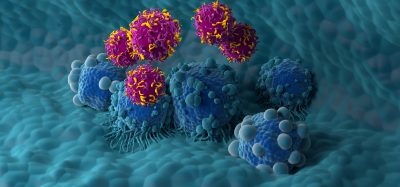GTP energy sensor identified as potential new target
Posted: 8 January 2016 | Victoria White | No comments yet
Researchers have shown that a specific enzyme is responsible for sensing the available supply of GTP, an energy source that fuels the uncontrolled growth of cancer cells…


For the first time, researchers have shown that a specific enzyme is responsible for sensing the available supply of GTP – an energy source that fuels the uncontrolled growth of cancer cells.
Their research underscores the enzyme’s potential to become a therapeutic target for future cancer drugs.
The findings were discovered by Atsuo Sasaki, PhD, assistant professor in the Division of Haematology Oncology at the University of Cincinnati (UC) College of Medicine, together with Toshiya Senda, PhD, professor at the High Energy Accelerator Research Organization in Tsukuba, Japan, and fellow researchers.
PI5P4Kβ senses the amount of GTP that is available
The team showed that the enzyme PI5P4Kβ (phosphatidylinositol-5-phosphate 4-kinase-β) acts like the arrow on a fuel gauge. The enzyme senses and communicates (signals), via a second messenger, the amount of GTP fuel that is available to a cell at any given time. Until now, the molecular identity of a GTP sensor has remained unknown.
“Energy sensing is vital to the successful proliferation of cancer cells,” he says. “A large amount of GTP is required in rapidly dividing cells, and cells need to know that the fuel is available to them. If we can interfere with the ability of PI5P4Kβ to sense fuel availability and communicate that information, we may be able to slow or halt the growth of cancers, including the aggressive brain cancer glioblastoma multiforme and cancers that have metastasized to the brain.”
GTP – guanosine triphosphate – is one of two energy molecules used by cells. The other is ATP (adenosine triphosphate). ATP handles the bulk of a cell’s energy requirements, while GTP is required for protein synthesis and is a signalling molecule that helps direct processes within the cell. When GTP levels are increased and utilised as fuel by rampaging cancer cells, its ability to perform its primary goals is compromised.
Targeting PI5P4Kβ could make cancers energy-depleted
Sasaki and his team identified PI5P4Kβ as a GTP sensor by demonstrating its ability to bind to GTP and by demonstrating, at the atomic level by X-ray structural analysis, the molecular mechanism by which it recognises GTP. They then designed PI5P4Kβ mutant cells that were unable to sense GTP concentration and, as a result, impaired the ability of PI5P4Kβ to promote tumour growth.
“By unveiling PI5P4Kβ’s role as a GTP sensor, we now have a potential new therapeutic target for patients,” Sasaki says. “If we can find drugs that stop PI5P4Kβ from acting as the fuel indicator, we could get these aggressive and tragic cancers into energy-depleted status.”
His next step is to use both pharmacological and molecular approaches that target PI5P4Kβ in a cell culture and in animal tumour models.
Related topics
Drug Targets








